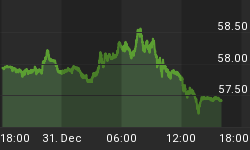The following is excerpted from a commentary originally posted at www.speculative-investor.com on 28th July 2013.
The main reason that this year's huge decline in the gold-mining sector took us by surprise is that we didn't seriously consider the possibility that a major/primary correction began in September of 2011, and one of the main reasons we didn't seriously consider this possibility was our belief that a primary correction had happened as recently as 2008. It didn't seem realistic that there would be a gap of only 3.5 years between the start of one primary correction and the start of another primary correction, given that there were gaps of at least 6 years between the primary downturns during the preceding long-term bull market. However, much of what has happened to the gold-mining sector over the past several years makes sense if we assume that the 2008 downturn was NOT a primary correction, but was, instead, a very steep intermediate-term decline.
If we make the aforementioned assumption, then:
1) The short duration of the 2008 correction makes sense (each of the two primary corrections that occurred during the 1960s-1970s bull market lasted about 2 years, whereas the 2008 correction lasted only 7.5 months).
2) The rapidity with which all of the 2008 losses were recouped makes sense (during the 1960s-1970s bull market it took the gold-stock indices more than 3 years to fully recoup the losses suffered during a primary correction, but the entire 2008 loss was wiped out in around 12 months).
3) The relative performances of gold bullion and the gold-mining sector make sense. Here's what we mean: Given that gold bullion was back to its 2008 peak by February of 2009, it is clear that in the gold bullion market the 2008 downturn was nothing more than an intermediate-term decline. While it is not uncommon for the gold-mining sector to diverge from the bullion market for short periods, the major trends in the bullion market and the gold-mining sector of the stock market should always be the same.
In a nutshell, a good argument can be made that the 2011-2013 downturn in the gold-mining sector constitutes the FIRST primary correction of the long-term bull market that commenced in November of 2000. In which case and as previously noted in our 15th July commentary, it is more appropriate to compare 2011-2013 with 1968-1970 than with 1974-1976.
Here is an update of our chart comparing the percentage change in the HUI from its 2011 peak (the blue line) with the percentage change in the Barrons Gold Mining Index (BGMI) from its 1968 peak (the green line).

A literal interpretation of the chart displayed above would lead to the conclusion that the HUI will consolidate over the next few weeks and then rally to the 370s by year-end. However, money should never be put at risk based on literal interpretations of chart comparisons such as this. The most reasonable way to view this chart is as another piece of evidence that a primary gold-sector correction is close to an end.
We aren't offering a free trial subscription at this time, but free samples of our work (excerpts from our regular commentaries) can be viewed at: http://www.speculative-investor.com/new/freesamples.html
















